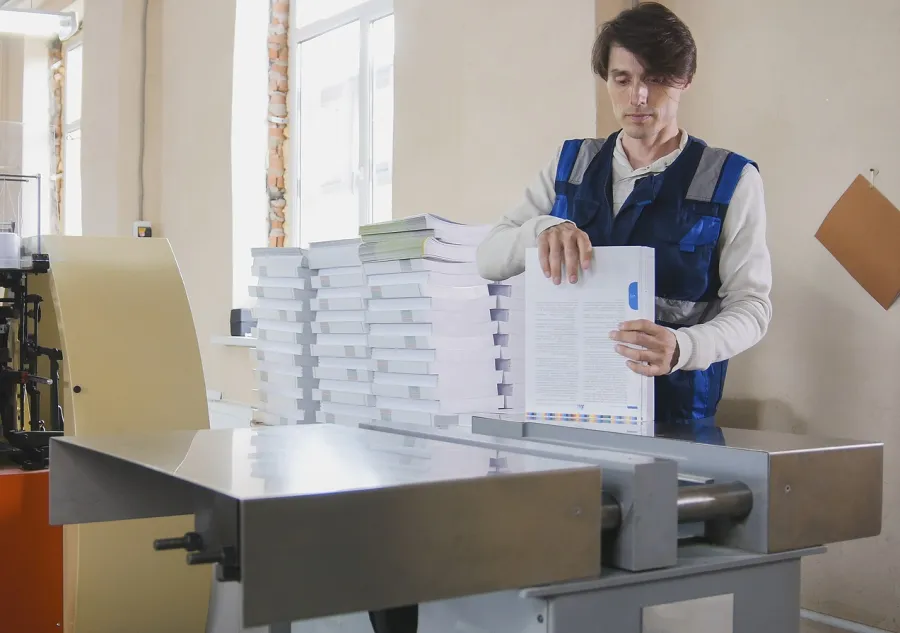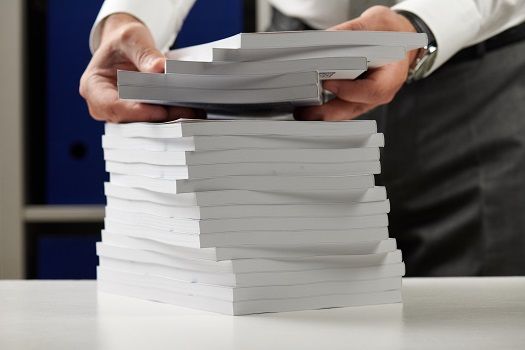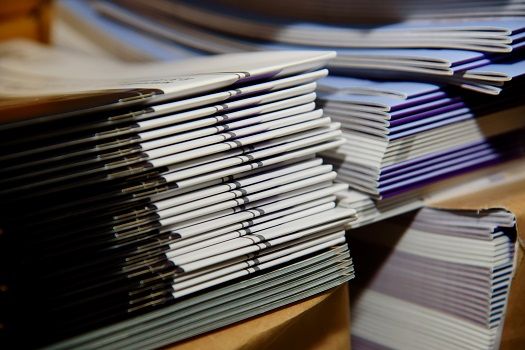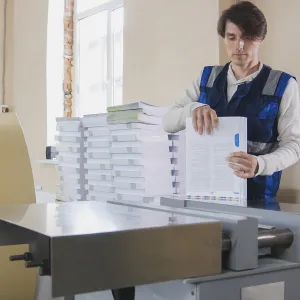Short Run Book Printing: The Gateway to Self-Publishing

estimated reading time: 4 minutes
Digital Technology has made Short Run Book Printing possible
Over the past few decades, more and more independent book creators
have chosen to self-publish their works instead of involving a traditional publishing
company. One of the primary reasons for this dramatic shift toward
self-publishing is the rapid advancement of Digital printing technology. Digital
printing has made short run book printing more affordable and eliminated many
of the cost barriers that aspiring authors once faced when seeking to publish
their book.
Without the invention of Digital printing, Offset printing would be the primary production method available for printing books. Though offset presses are still widely used and renowned for their superior print quality, offset production requires the creation of printing plates. It also involves an extensive set-up process prior to each production run. This means that a large quantity of books has to be produced in order to distribute these upfront expenses across more units, thereby bringing down the per-book printing cost so that book authors can make a respectable profit.
However, placing an order for 1000, 2000, 5000 or more books
at one time requires a substantial cash outlay, not just for the printing but also
for the shipping and storage. This would be a common barrier to entry for many new authors, unless they happen to be one of the chosen few to secure a contract
with a large publishing house. In that case, the publishing house would pay for the printing.
However, the publishing house would then recoup this cost by retaining a large
portion of the book's profit, thereby reducing the author's share (yet another
reason that explains the popularity of digital self-publishing).

Digital Printing is a Self-Publisher's Best Friend
Digital presses can create professionally-printed books without the need for printing plates or an extensive set-up process. The layout files are sent directly to the press for output. This allows print jobs to commence quickly. Also, because there are no real upfront costs like there are with offset printing, the run sizes do not have to be as big. An author can print 100 or 200 books instead of thousands.
Many times, a single book can be printed on a digital press.
However, because of the transaction costs involved, the unit cost per book will
always be lower when printing a few hundred books instead of printing a single
book.
Being able to print lower quantities of books in a cost
effective manner is the main reason Digital printing has become so popular with
self-publishers. Also, some self-publishers only intend to offer a limited
number of books, so digital production is ideal. Even if an author's dream is to ultimately
sell thousands of copies of their book, it is still wise to start off with a
lower print quantity. This is especially true for first-time authors who do not
have any prior book sales on which to judge their popularity.
Plus, smaller print runs will give you tremendous
flexibility when first starting out. For example you can make corrections, fine
tune the copy, or experiment with different cover designs. Ordering in smaller
quantities allows tweaks like these to be made without much fuss. Then once the
book's popularity increases you can order larger quantities and take advantage
of even lower unit costs.
In fact, once your book takes off and you need to produce thousands
and thousands of copies, offset printing will become your new best friend. With
offset printing, the unit price comes down dramatically once the quantity of
books gets into the thousands. So the day your book's growing sales volume dictates
a switch to offset printing from digital printing, that will be the day you'll know
you have arrived.

Color Vision loves to work with Self-Publishers!
As a self-publisher, you will have total control over your
book. You'll maintain full ownership rights, get to pick your marketing
channels, and keep all profits from the book. You will also get to pick the company
that prints your book.
As a full-service printer, Color Vision prints and binds all
types of books for Self-Publishers, including comic books, novels, biographies,
self-help, how-to, sci-fi, romance, fantasy, and more.
Also, because we have both digital and offset presses, we
can assist with your short run book printing needs as well as the longer
production runs you may require once demand for your book grows. Plus, because
we are a totally custom printer, Color Vision offers just about any book size, binding
style, or finishing option you might want.
In addition, we stock a wide array of paper types and can also
custom order any specialty paper you request. In regard to ink choices, we can
print your books using Full-Color process (CMYK), Pantone Spot colors, Black
Ink only, Grayscale, or any combination of these popular color systems.
For over 40 years, Color Vision has been
producing high-quality books at very affordable rates. We have thousands of
satisfied customers and hope you will choose us as well.
Why Buy your Books from Color Vision Printing?
- You will communicate with Real People who are eager to offer help and guidance
- We are a Totally Custom Printer - your options are virtually unlimited
- We have Digital and Offset presses to accommodate varying run sizes
- Extensive Selection of Finishing and Binding Options
- Friendly and Helpful Staff dedicated to your Success
- 40+ Years in the Printing Business
- All Books are printed in the USA
- Excellent Quality and Prices
- A+ BBB Rating
If you have any questions or want to discuss your book
project, just give us a call at 800-543-6299. Or, use our easy Quote
Request form to send us the specifications of your project and we will
email a quote to you.
The journey into Self-Publishing can be extremely
gratifying and we look forward to playing a part in your book's success. Just
let us know how we can help!
Related Articles:
Which
Process is Better? Digital Printing vs Offset Printing
Self-Published Books: What is an ISBN number? Do I need one?
Related Articles

Short Run Book Printing: The Gateway to Self-Publishing
Read This Article

Perfect Bound Books: Exploring the Perfect Binding Process
Read This Article

Custom Book Printing: What is PUR Binding?
Read This Article

Custom Comic Book Printing: 10 Frequently Asked Questions
Read This Article